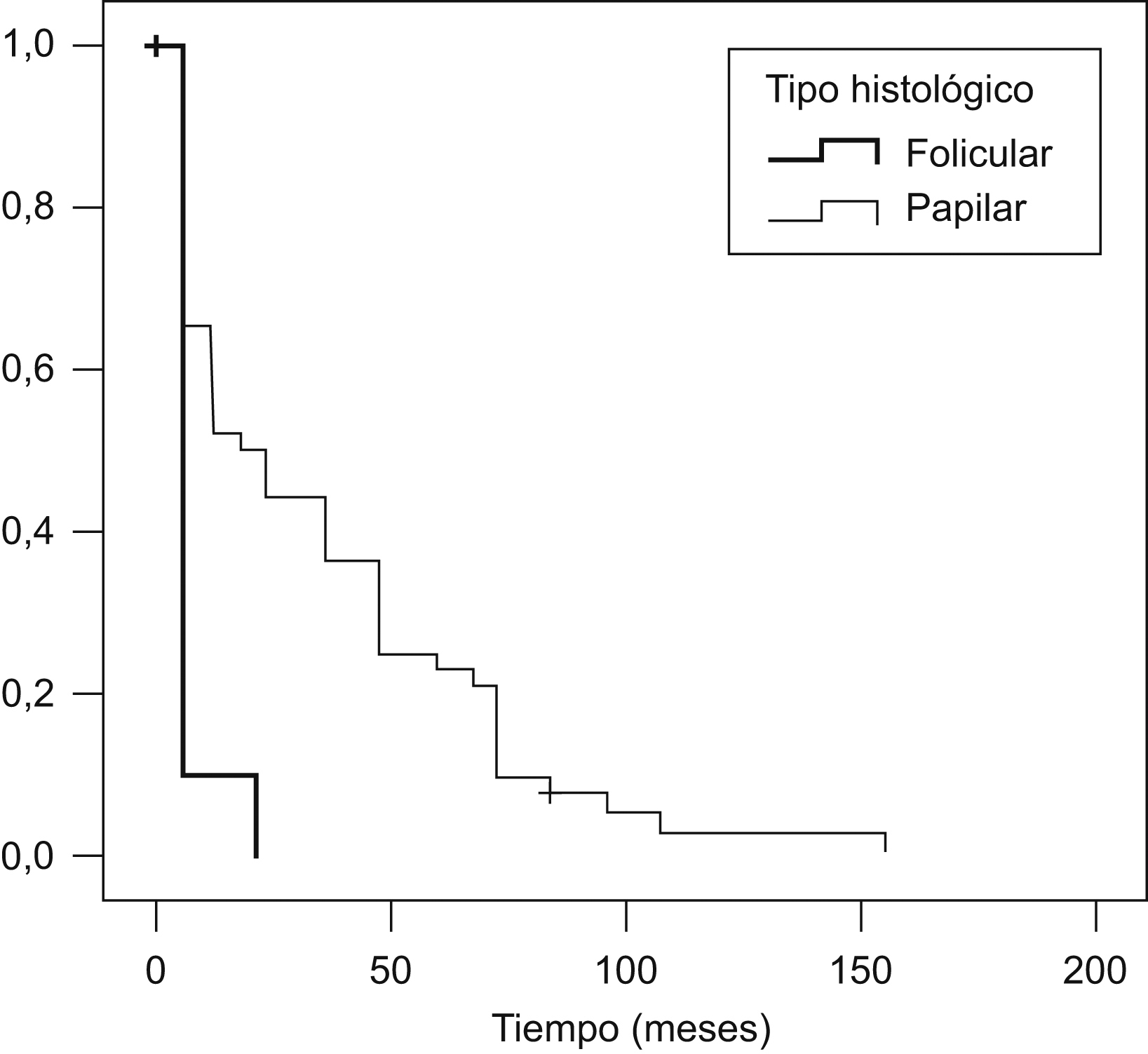Analizar el perfil clínico del carcinoma diferenciado de tiroides (CDT) y su relación con el pronóstico de la enfermedad.
Pacientes y métodoSe realizó un análisis retrospectivo de 80 niños con CDT. A todos se les practicó una tiroidectomía total y subtotal. Setenta y cinco niños recibieron dosis de yodo-131. Todos se controlaron anualmente mediante seguimiento clínico, analítico y pruebas de imagen.
ResultadosDe los 80 pacientes, 52 eran mujeres (edad media de 13,43 y desviación estándar [DE] de 3,6 años). El 87,5% presentó un aumento del diámetro cervical como primer síntoma, que correspondía en un 65% a un nódulo tiroideo y era más frecuente en el sexo femenino. La forma histológica papilar (84%) se presentó más frecuentemente que la folicular y se asoció a mayor presencia de adenopatías y metástasis. El 56,4% de los pacientes presentó enfermedad avanzada en el momento del diagnóstico. Nueve pacientes tenían antecedentes de irradiación previa. Un 32,5% de los pacientes presentó complicaciones posquirúrgicas. Al final del seguimiento (media de 10,79; DE de 5,69 años) sólo 9 pacientes persistían con enfermedad, variable asociada significativamente con el estadio 4.
ConclusionesEl CDT en niños se presenta con mayor incidencia en el sexo femenino. La forma de inicio habitual es la presencia de un nódulo cervical. El tipo histológico predominante es el papilar, con elevada frecuencia, en forma de diseminación ganglionar y metastásica.
The objective was to analyze the clinical profile of Differentiated Thyroid Carcinoma in children (DTC) and the predisposing factors to suffering the disease.
Material and methodEighty children with DTC were studied retrospectively. They all underwent total/near total thyroidectomy and 75 cases underwent ablative iodine therapy. Patients were controlled periodically with clinical, laboratory and imaging tests follow-up.
ResultsTwenty eight patients were male and 52 female (mean age: 13.43±3.6y). The 87.5% of patients had an increased cervical perimeter as the first clinical symptom, 65% of them corresponding to a thyroid nodule with a predominance of females. The papillary histological pattern was more frequent than the follicular pattern, and it was associated with the presence of lymph involvement and metastasis. About 56.4% of patients showed advanced disease at the time of diagnosis. 9 patients had previous irradiation. Surgical complications appeared in 32.5% of patients. At the end of follow-up (mean: 10.79±5.69y) 9 patients had persistent disease with a significant relation with stage 4.
ConclusionsDTC presents a higher incidence in females than in males. Cervical node is the most frequent form of initial presentation. The papillary type is more prevalent than the follicular type, and it is frequently associated with lymph node involvement and metastatic spread.
Artículo
Comprando el artículo el PDF del mismo podrá ser descargado
Precio 19,34 €
Comprar ahora







